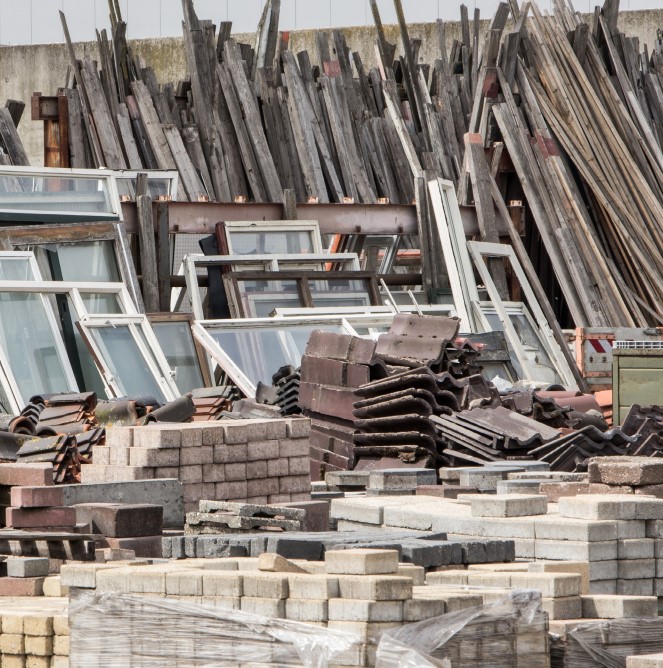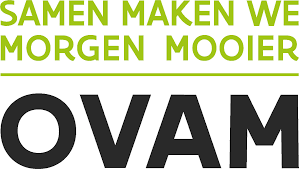How do policymakers view the challenges for urban mining? And, more specifically, what opportunities do they see for the solutions that a project like Digital Deconstruction can begin to offer? We asked Philippe Van de Velde of the Public Waste Agency of Flanders (OVAM).
OVAM is the Public Waste Agency of Flanders and as such is responsible for sustainable waste and materials management and clean soil in the Flemish region of Belgium. Together with the Flemish government and all relevant stakeholders, OVAM has worked out the policy program 'Towards Circular Construction 2022-2030'. Philippe Van de Velde is a policy advisor at OVAM and specializes in construction waste, among other things.
What is OVAM's role in the development of urban mining and improved recycling and reuse of building materials?
"In the policy program 'Towards Circular Construction 2022-2030', we have included the objective of building basically everything with materials from the available potential by 2050. This means urban mining is obviously becoming increasingly important. For some materials, such as stony materials, we are already doing well. For that type of material, we are at 95% recycling or reuse. However, most of it is used for foundations. This is not a bad result in itself, but we should still try to transform those materials into real high-quality building materials, preferably within our own value chain. One challenge we still have in that regard is the definition of 'high-grade'."
"For the other, non-stony streams, we are facing a catch-up move, which, on the one hand, we are imposing on ourselves, and where Europe is also asking us to reincorporate 70% into the chain. OVAM wants to do this in close cooperation with the sector. The current policy program for 2022 to 2030 has been jointly developed with the ambition of making construction completely circular by 2050. This cooperative process started in 2012 when we moved from 'implementation plans' to 'policy programs'."
"The 'Circular Construction Living Lab (Proeftuin)’ also maximizes cooperation with the sector. The living lab is an environment for research and experimentation, in which experts work on pilot sites with partners from the construction sector. Based on the results of these practical experiments, they draw up viable recommendations for new business models and practices. In this way, the construction sector itself participates in policy development. The report on urban mining, the first part of the living lab, is therefore embedded in the new policy programme. Digitalisation has manifested itself strongly as a transversal theme in the living lab. In urban mining, being able to exchange reliable data is crucial. To this end, we need to link different applications and data sources, for instance to match supply and demand or to provide regional and local insight into the availability of certain materials in the built environment. Especially on the supply side, we often notice a lack of confidence due to the uncertainty caused by the current lack of data. This prevents some companies from developing a business model."
What digital tools could help?
"OVAM doesn't actually develop tools itself. We do develop standard procedures that others work with to create useful tools around them, which we then follow up ourselves. Tools like BIM and digital demolition follow-up plans, tools to start measuring or tracing things, and having the results digitally available immediately . One challenge, for example, is dealing with materials that come from inside or outside the construction sector, which can be reused as raw materials with a resource declaration. The problem is that this process sometimes faces restrictions. That is why we are experimenting with electronic tags on raw materials so that we can better trace them now and in the future."
"An important role in the story of building materials is to be played by MATIS, OVAM's materials information system, in which all data on collection and processing will be brought together digitally. MATIS will also be fed by external platforms. Another example is demolition follow-up plans. These are now very complex to draw up. When everything is done in BIM, and you know what materials and applications there are, an expert can work out three plans in a day, so to speak."
"A major challenge will be getting smaller companies on board. Here, trade associations will play an important role in informing and motivating these companies: for them, what is the added value of these, often still considerable, investments? Internally, we really try to communicate the importance of increasing efficiency, and emphasis the potential savings in the somewhat longer term. This focus is driven by an awareness that this evolution towards more digitalization is probably inevitable."
"Sometimes construction is said to be an inherently conservative sector. I disagree. My sense is that the construction sector, like others, wants certainty. In construction, things are often just more complex. In other contexts, it is not uncommon to simply replace a faulty part with a new one. With buildings, there is always a need for some form of guarantee, because the lifespan of a building is usually quite long. If a component should theoretically last 20 years, in a lot of cases you may have problems after 15 years. What if the component is structural? Not an easy matter! So it’s understandable that building and demolition companies need to build trust first. A seller of second-hand building materials would rather avoid problems for the contractor using his wares."
What could be the impact of projects such as Digital Deconstruction, which specifically focuses on developing usable digital solutions for demolition and reuse of building materials, tested in several regions (Belgium, Luxembourg, the Netherlands and France)?
"The data collected digitally for the preparation of a demolition follow-up plan have potential utility further down the chain. Based on the data from demolition sites, it is possible to better estimate potential. A high-performance digital system for inventorying and drawing up a demolition follow-up plan also offers the possibility of including this data in a database for supply and demand of recyclable or reusable materials arising from demolition works."
"This way of working offers opportunities because in the current process, too much information is still lost during transfer. Data exchange can be much faster and cheaper. A digital demolition follow-up offers opportunities for ample and correct information that will provide more opportunities for material and product reuse."


